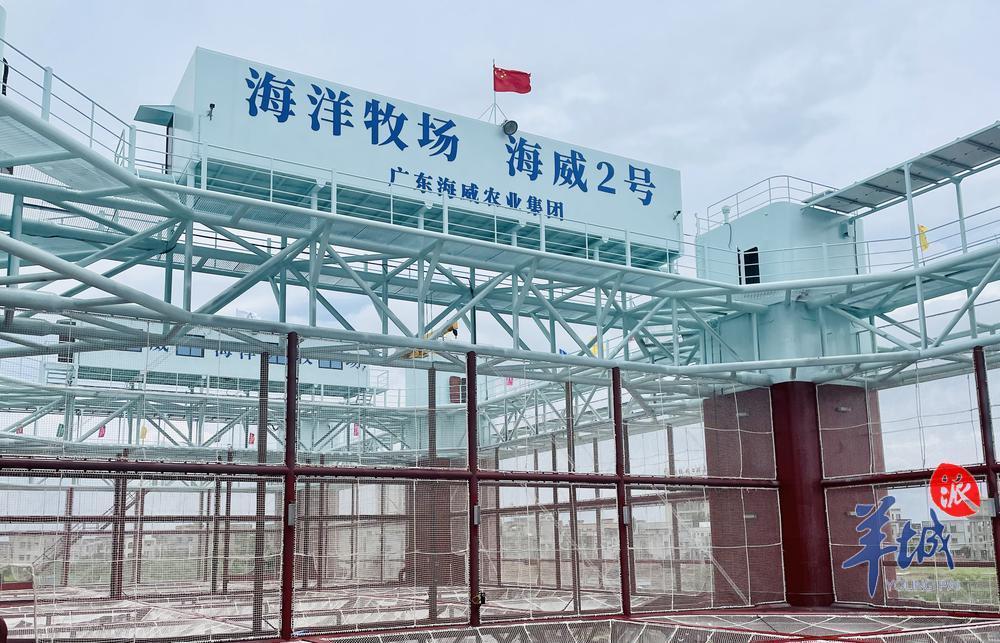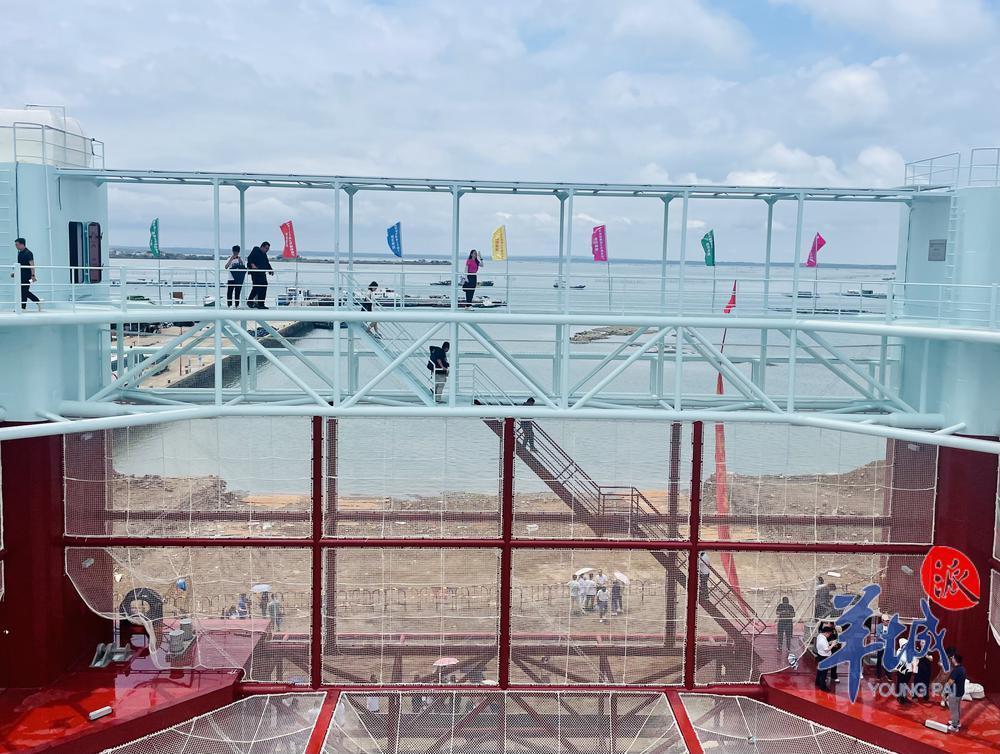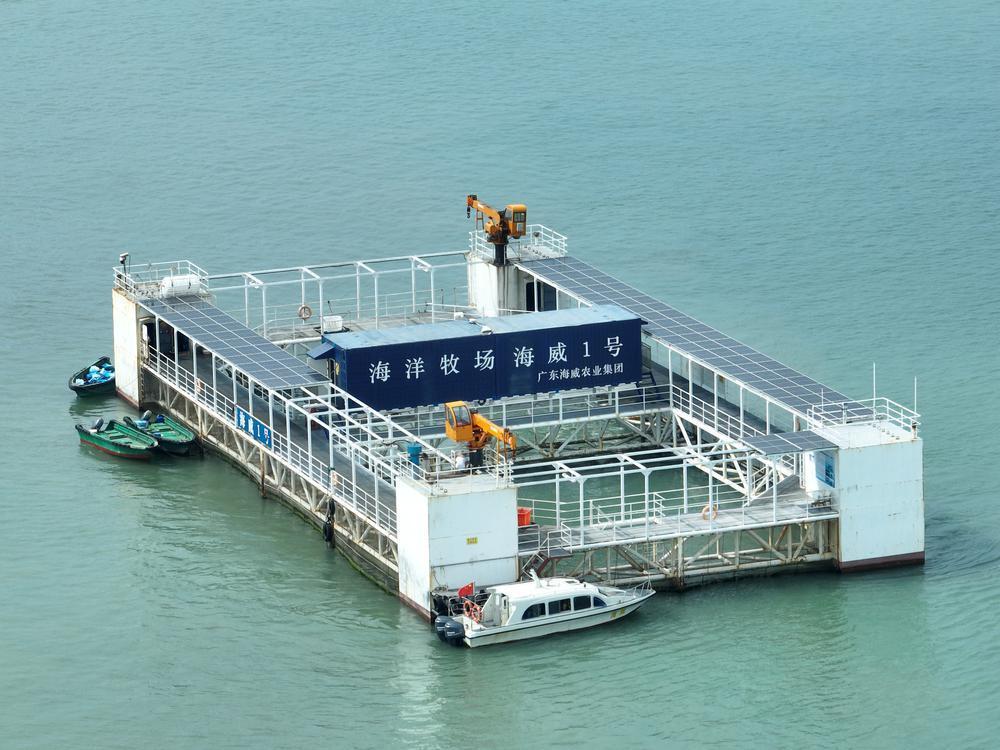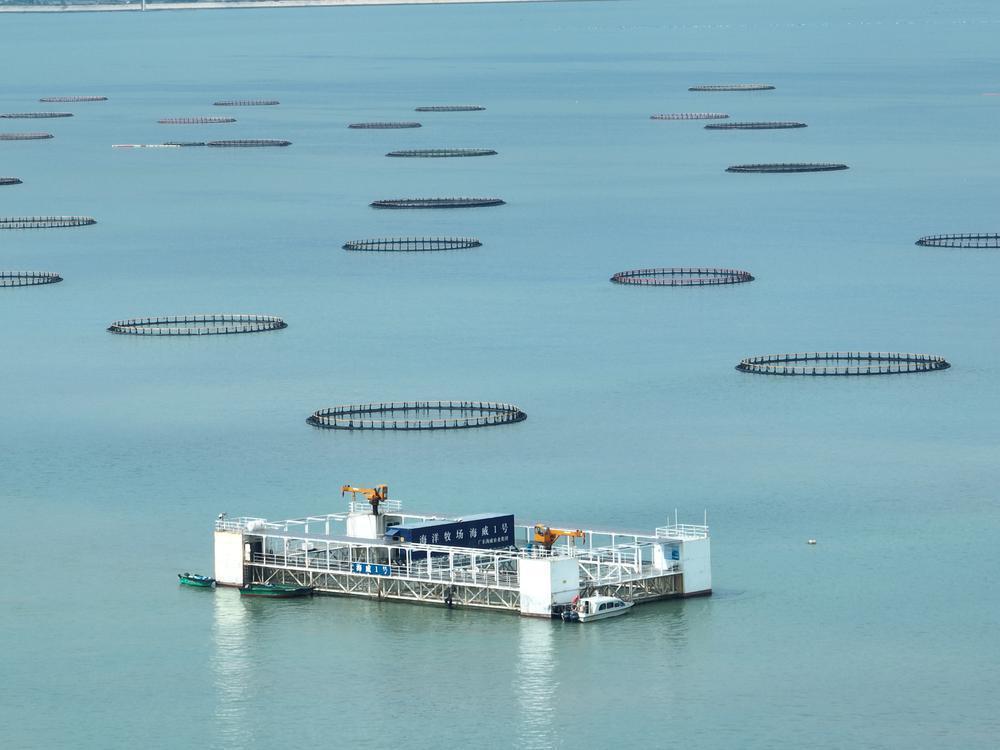In the Liusha Bay of Leizhou Peninsula, Zhanjiang, the first deep-sea intelligent platform for aquaculture is calculating the considerable revenue by "blue economy". The blue economy is to ocean-based or ocean-relevant environmentally friendly marine industries and economy. For instance, the fast flow of deep-sea currents, large spaces for fish to move, and high levels of activity allow for the production of high-quality and "quasi-wild" large fish species such as brown croakers, cobias, and giant groupers (Queensland groupers), among which a single brown croaker's swim bladder is expected to sell for thousands of yuan two years later.

What are the advantages of building "marine ranches" in Guangdong? How is the "blue granary" in Zhanjiang specifically constructed? Blue granary is a national strategy in China targeted at an efficient supply of high-quality protein food, further improving food security. On June 14th, a reporter from Yangcheng Evening News came to a fishing port in Liusha Bay and learned about the recently-launched "Haiwei No.2", the first and largest platform for offshore aquaculture of 30,000 cubic meters in Guangdong, to look for answers.

"A single breeding cycle can produce more than 500,000 kilograms of high-quality farmed fish in the deep sea," said Liang Longcheng, head of the marine ranch of Guangdong Havwii Agriculture Group Co., Ltd. As the giant among Guangdong's deep-sea aquaculture platforms, "Haiwei No.2" enjoys a designed life of 20 years, a length of 86 meters, a width of 32 meters, a height of 16.5 meters, and a cultivation water body of 30,000 cubic meters, with each cubic meter of water capable of raising 20 kilograms of fish. It mainly focuses on the cultivation of precious seawater fish species at medium- and high-end such as brown croakers, cobias, and giant groupers (Queensland groupers).

It is understood that the current equipment installation and other preparations for "Haiwei No.2" have been completed, which is scheduled to be launched at the highest tide on June 18th.
In addition to the excellent equipment support, building a marine ranch and a "blue granary" requires favorable weather and sea conditions. Ke Zhenfei, director of the Agriculture and Rural Affairs Bureau of Leizhou City, said that Liusha Bay in Leizhou, located in the subtropics with a mild climate and seawater quality standards between Class 1-2, is suitable for developing seawater aquaculture due to its large tidal range and exchange volume. Research has revealed that 88 species of phytoplankton, 54 species of zooplankton, and 45 species of economical aquatic products have been found in the waters of Leizhou Bay, which provides a rich bait basis for the growth of fish, shrimp and shellfish larvae.

"Currently, the modern marine ranch in Leizhou has taken shape," Ke said. Leizhou vigorously develops the "deep blue fishery" with offshore cages as a breakthrough, further improving the construction of aquaculture bases with offshore cages in Dongli, Liusha, and Wushi sea areas. Up to now, 978 offshore cages have been put into production and use in Leizhou City, accounting for about one-third of Zhanjiang's total.
In 2022, the total output value of Guangdong Province's marine production topped 1.8 trillion yuan, a year-on-year increase of 5.4%. This indicates that the "marine ranches" has emerged as a new driving force for high-quality development in Guangdong as the development of "blue economy" accelerating in the southern part of the province.
广东建设“海洋牧场”有什么发展优势?|高质量发展调研行
深海水流速度大、鱼类运动空间足、运动量大,可产出肉质“类野生”的鳘鱼、军曹鱼、龙趸(鞍带石斑鱼)等大型鱼类;2年后一条鳘鱼胶(鳘鱼膘)就预计可卖上千元……在广东雷州流沙湾海域,湛江首个深远海智能渔业养殖平台正算出了一笔可观的“蓝色经济”账。
广东建设“海洋牧场”有什么发展优势?在湛江,“蓝色粮仓”具体是怎样打造的?6月14日,羊城晚报记者来到雷州流沙湾渔港码头,走进将于近期下水的广东最大海上养殖平台、首个3万立方米的智能渔业养殖平台“海威2号”一探究竟。
“单个养殖周期可收获超100万斤优质深远海养殖鱼类。”广东海威农业集团有限公司海洋牧场负责人梁龙成介绍,作为广东深远海养殖平台中的“巨无霸”,“海威2号”设计寿命20年,平台长度86米、宽度32米、高度16.5米,养殖水体3万立方米,每立方米水体可养殖40斤鱼类。以鳘鱼、军曹鱼、鞍带石斑鱼(龙趸)等中高端名贵海水鱼养殖为主。
记者了解到,目前,“海威2号”设备加装等下水工作已准备就绪,计划于6月18日择最高潮位下水。
除了有“利器”,建设海上牧场、“蓝色粮仓”,要讲天时“海”利。雷州市农业农村局局长柯振飞介绍,雷州流沙湾地处亚热带,气候温和,海水质量处于1-2类海水水质标准之间,海水潮差大,交换量大,适合发展海水养殖业。据调研,雷州湾海域采集到给鱼、虾、贝幼体的发育、生长提供了丰富的生物饵料基础的浮游植物88种,浮游动物有54种,为水产养殖业提供了丰富物质基础的经济水产品45种。
“目前,雷州现代海洋牧场初具规模。”柯振飞说,雷州大力发展“深蓝渔业”,以深水网箱为突破口,进一步完善东里、流沙、乌石海区深水网箱养殖基地建设。截至目前,雷州市投产使用的深水网箱978个,约占湛江的三分之一。
据悉,2022年广东省海洋生产总值达1.8万亿元,同比增长5.4%。“蓝色经济”正在南粤大地上加速发展,“海洋牧场”崛起成为广东高质量发展的新动能。
文、图|羊城晚报全媒体记者 王丹阳 冷霜(署名除外)
译|陈萱
责编 | 王楠









